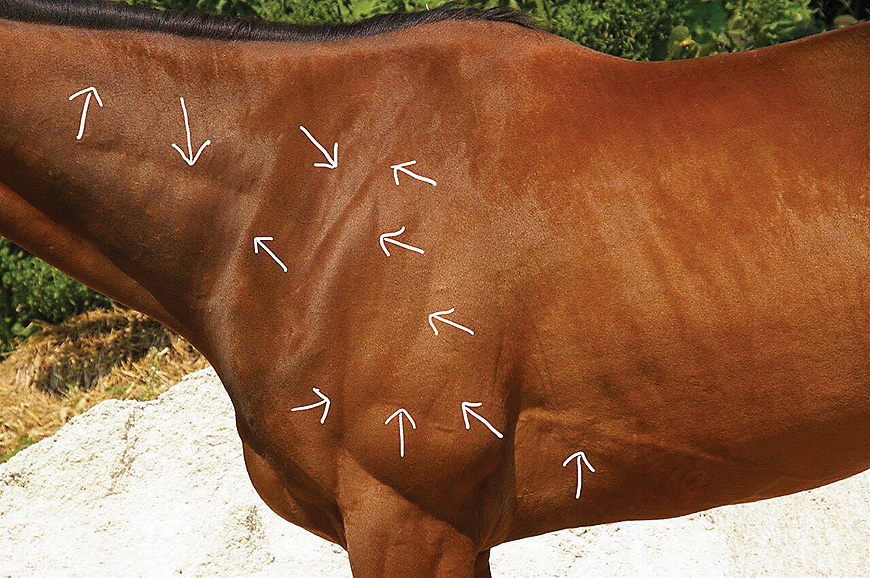Fascia is responsible for maintaining the body’s structural integrity, providing support and protection to muscles, bones and organs, and even acts as a shock absorber.
Spring is finally upon us, which means many equestrians will be getting their horses back into consistent work after a tough winter. This winter brought all the usual suspects that prevent us from maintaining a consistent training program – polar vortexes, snowstorms, freezing rain and damaging winds. Winter makes it difficult to even get to the barn some days. And for our horses it means more days spent inside when the weather makes it too dangerous to turn out. Or the inability to safely move around icy paddocks left with frozen muddy divots.
For many, equine and human alike, winter means decreased mobility. Equestrians know this requires a slow and steady return to work to avoid strain and injury. But many equestrians also know the benefits of Equi-Bow and have chosen to add it as part of their horse’s regular training and maintenance program.
How can Equi-Bow benefit your horse during its return to regular work? The key is fascia. If you’ve never heard the word “fascia” or aren’t quite sure what it means, think about that thin white film you see on an uncooked chicken breast. That’s fascia! There’s a reason many find fascia fascinating; this connective tissue is found in every corner of the body from head to tail to hoof. Fascia is responsible for maintaining the body’s structural integrity, providing support and protection to muscles, bones and organs, and even acts as a shock absorber. And that’s really just scratching the surface.
So why is fascia so important to Equi-Bow practitioners? If you consider that the body’s skeletal system is held in place by the muscles, and the muscles are supported by fascia that essentially functions like a form-fitting pair of pantyhose, you can see how fascia plays an integral role in musculoskeletal health.
 Fascia creates a smooth surface on which muscles can glide, allowing for optimal function. However, in times of decreased mobility, the lack of muscle movement creates a sort of fascial “fuzz”, which in turn creates friction between muscle fibres. If this fascial friction continues to build up it will eventually present itself as a visible line of tension called fascial banding. This is commonly seen on a horse’s flank, shoulder, over the scapula toward the withers, and throughout the hind end appearing as delineation between muscles.
Fascia creates a smooth surface on which muscles can glide, allowing for optimal function. However, in times of decreased mobility, the lack of muscle movement creates a sort of fascial “fuzz”, which in turn creates friction between muscle fibres. If this fascial friction continues to build up it will eventually present itself as a visible line of tension called fascial banding. This is commonly seen on a horse’s flank, shoulder, over the scapula toward the withers, and throughout the hind end appearing as delineation between muscles.
Presentations such as fascial banding, stiffness, postural imbalances, gait abnormalities and muscle asymmetry can be addressed through the fascia. Fascia not only hugs the muscles and protects the organs, it is also a vast network of intercellular communication. Equi-Bow practitioners use a light-tough technique to send messages through the fascia to your horse’s nervous system, encouraging its shift into a parasympathetic or “rest and digest” state. In this restorative state the body can undergo cellular repair, create new neuromuscular patterns and rehydrate fascia.
Contact a Certified Equi-Bow Practitioner to learn more about how Equi-Bow can support your horse in his or her journey back into consistent work this season. Find a list of certified practitioners in your area on the Equi-Bow website at www.equi-bowcanada.com
Story by Angela Saieva, CEBP/CETP/CEMT info@elevationequine.com www.elevationequine.com


